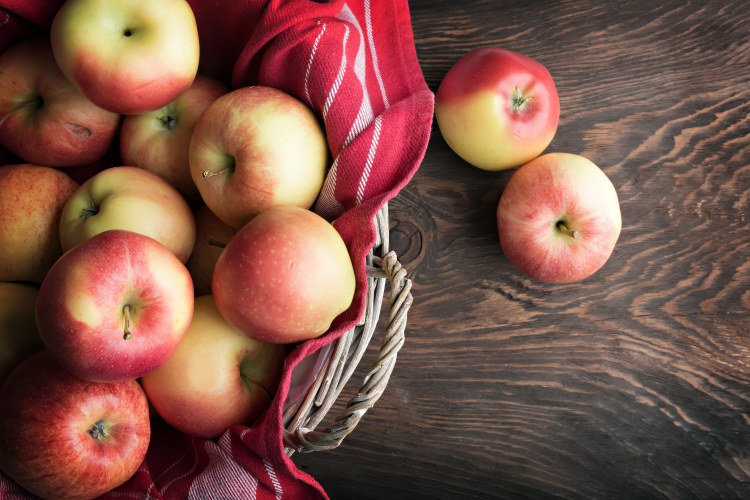
Polishing an apple with your shirt might remove some dust and dirt, but getting rid of pesticide residues could take a little more work. Researchers now report in ACS’ Journal of Agricultural and Food Chemistry, that washing apples with a common household product — baking soda — could do the trick for residues on the surfaces of the fruit.
The use of pesticides can help increase crop yield, but concerns over their potential effects on human health have been raised over the years. Washing could be one effective strategy to clean pesticides off produce, and it is standard practice in the food industry. But some of the plant-protecting compounds that get absorbed by fruits and vegetables might not be easily removed using current cleaning methods. Lili He and colleagues wanted to find out which washing method can most effectively reduce pesticides.
The researchers applied two common pesticides — the fungicide thiabendazole, which past research has shown can penetrate apple peels, and the insecticide phosmet — to organic Gala apples. They then washed these apples with three different liquids: tap water, a 1 percent baking soda/water solution, and a U.S.-EPA-approved commercial bleach solution often used on produce. The baking soda solution was the most effective at reducing pesticides. After 12 and 15 minutes, 80 percent of the thiabendazole was removed, and 96 percent of the phosmet was removed, respectively. The different percentages are likely due to thiabendezole’s greater absorption into the apple. Mapping images showed that thiabendazole had penetrated up to 80 micrometers deep into the apples; phosmet was detected at a depth of only 20 micrometers. Washing the produce with either plain tap water or the bleach solution for two minutes, per the industry standard, were far less effective.
###
The authors acknowledge funding from the National Institute of Food and Agriculture of the U.S. Department of Agriculture.
The paper’s abstract will be available on Oct. 25 at 8 a.m. Eastern time here: http://pubs.acs.org/doi/abs/10.1021/acs.jafc.7b03118
The American Chemical Society is a not-for-profit organization chartered by the U.S. Congress. ACS is the world’s largest scientific society and a global leader in providing access to chemistry-related research through its multiple databases, peer-reviewed journals and scientific conferences. ACS does not conduct research, but publishes and publicizes peer-reviewed scientific studies. Its main offices are in Washington, D.C., and Columbus, Ohio.
To automatically receive news releases from the American Chemical Society, contact [email protected]
Follow us: Twitter | Facebook
Media Contact
Katie Cottingham
[email protected]
301-775-8455
@ACSpressroom
http://www.acs.org





